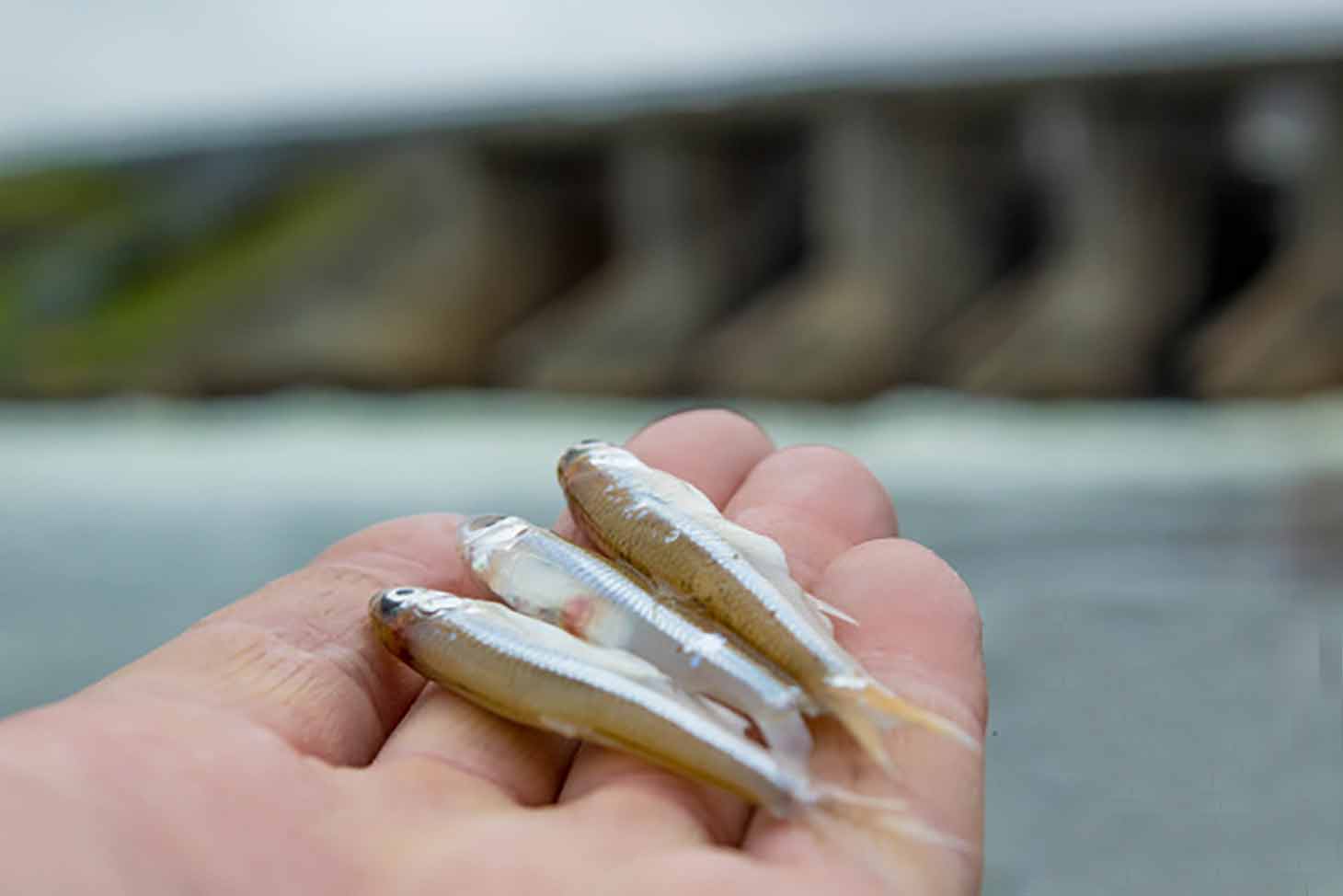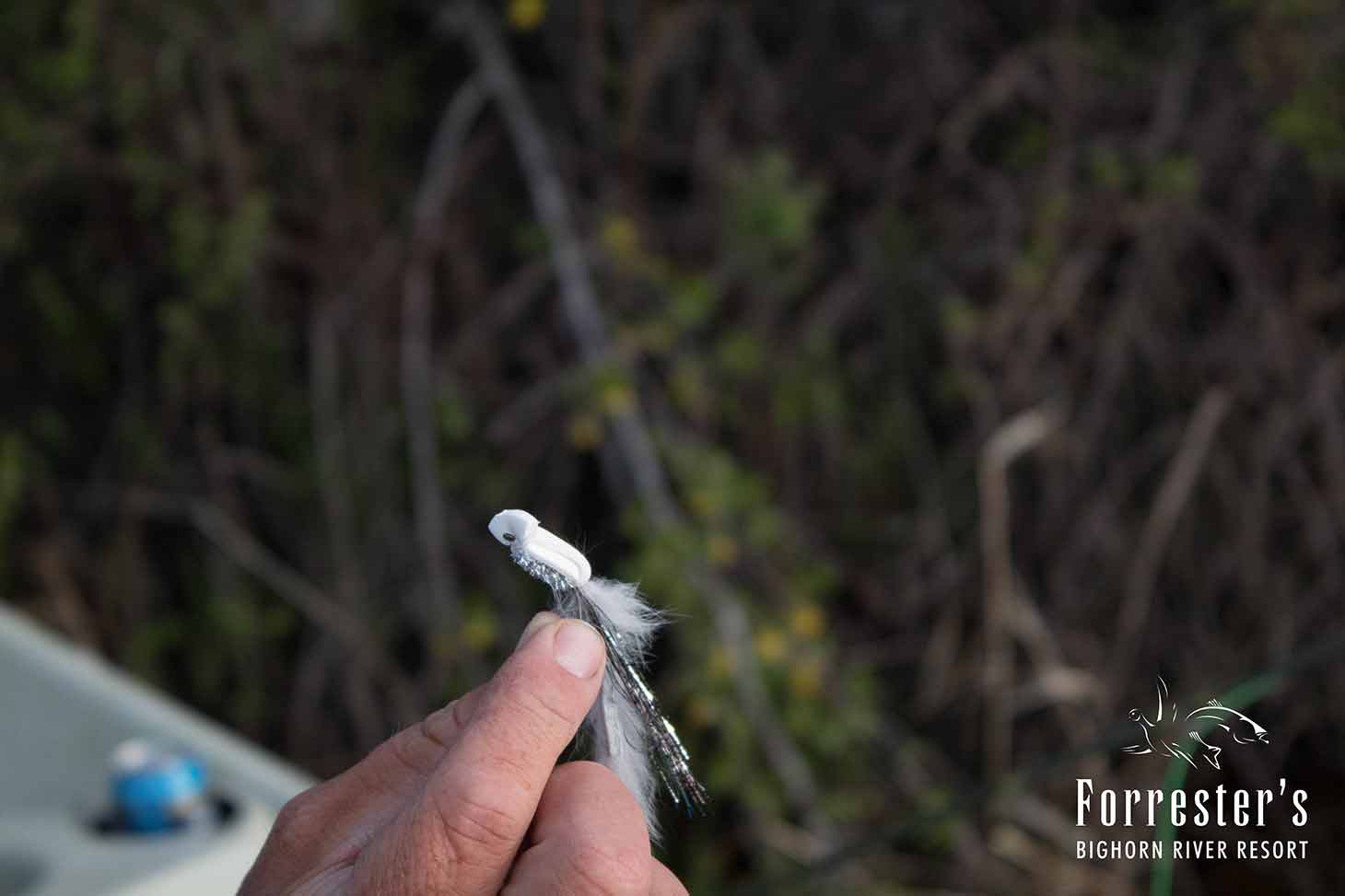
The truth behind the Emerald Shiner Minnow on the Bighorn River
This spring a LARGE number of shiner minnows have been flushed over the dam from the Bighorn Reservoir and ended up in the popular trout water of the Bighorn River. They have changed the fishing, adding a new dynamic to how we catch trout on this incredibly famous section of the river. The river boasts between 5000 and 7000 trout per mile and is home to an aggressively feeding trout population. So you can imagine what happens when a large delicious food source such as the Emerald Shiner minnow (nrotropis atherinoides) is all of sudden available in large numbers to this hungry trout population. If you can’t imagine I’ll spell it out for you; trout FEEDING FEST! The question on every fisherman’s mind is where did they come from and is it here to last?
First of all, the shiner minnow is not an invasive species to the Bighorn River. In fact it’s native to the Yellowstone River and all of its tributaries in places where the water is WARM enough for it to exist. The reason it’s never been a big player on the Bighorn River in years past is that it can only reproduce at night in water temperatures between the high 60's F and low 70's F. The female will flip over 1-2 feet from the surface and release her eggs. The eggs float to the surface where the male will fertilize the eggs. In one to two days the eggs hatch and tiny minnows are born. As a tail water the Bighorn River’s high temperatures rarely ever exceeds 60 degrees F. Therefore the popular trout section of the river closest to the dam can’t support the Emerald Shiner Minnow population.

The shiner minnow is considered to be slightly migratory during it’s spring spawning season and will often times move up river to spawn. These minnows have been spawning successfully in the lower Bighorn River and Yellowstone River for centuries.
The shiner minnow lives to be 4-5 years old maximum. They reach full size after 2 years and females usually grow and live longer. At full growth the shiner minnow will be 4.3 to 4.7 inches long. Their primary diet is plankton and as plankton moves throughout the water column the minnow will adjust depth to eat. This makes them Benthopelagic or open water feeders. Meaning they rarely hang around cover and are most often out in the middle of slow moving water. They are suspended delicacies for trout on seam lines and swirly water. The minnows do not discriminate between dark and light to feed, but trout can see them better in low light situations due to their greenish clear color.

SO where did they come from? Wyoming doesn’t have them listed as native, but Montana does. Therefore it’s logical to assume that the water temperature in Wyoming of the pre-dam Bighorn River was to cold for them to reproduce. This means the minnow didn’t make an incredible comeback and populate the Bighorn Reservoir. The Emerald Shiner Minnow along with the Small Mouth bass were introduced in the Wyoming Bighorn River in the late 80’s. In 1992 schools of Shiner minnows were collected at Horseshoe Bend. By 1997 huge schools were recorded all over the lake and in 2017 their numbers were in the tens of thousands. The 2017 high water forced the BOR to release over the top of the dam flushing them into the Montana Bighorn River. Re-establishing them on the upper 13 and making for some new and exciting fishing on the Bighorn River!
It’s hard to say if the shiner minnow will take hold on the popular upper 13 miles of the Bighorn River in Montana. With typical cool waters they wont be able to reproduce in large numbers, but they might take hold in some of the back waters of the upper 13 miles and lie waiting until the next warm water year. Where again it will be a shiner minnow bonanza!
Written by Nick Chiasson contributing for Forrester’s Bighorn River Resort.
HAPPY FISHING!!
Credits to Montana FWP Biologist Mike Ruggles for contributing information on the Emerald Shiner Minnow.

